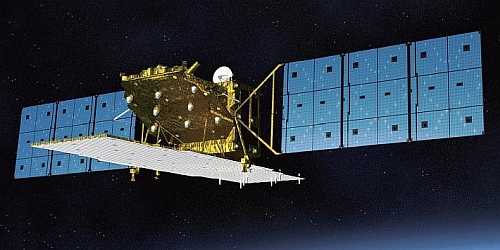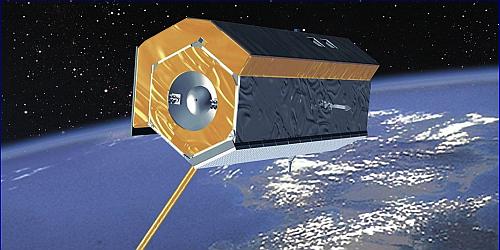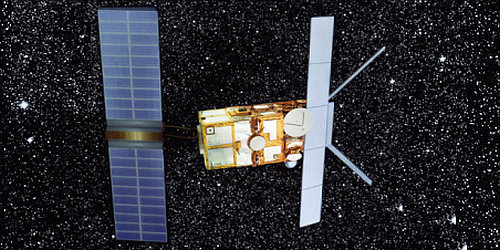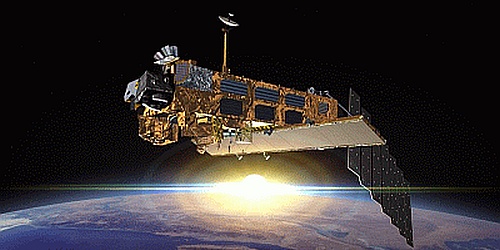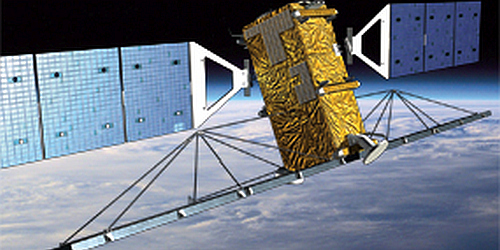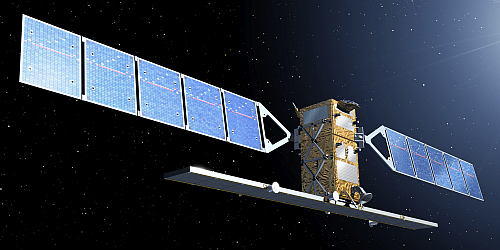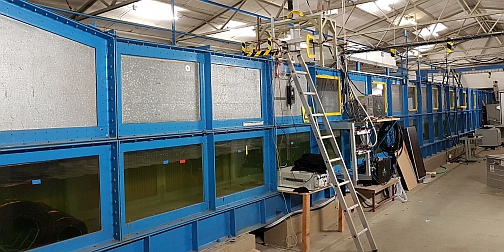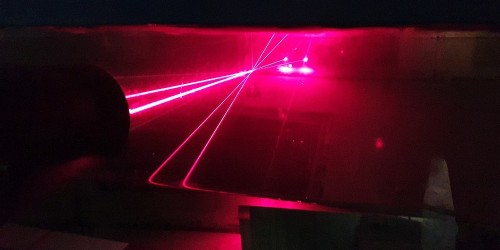|
Size: 2045
Comment:
|
← Revision 129 as of 2022-12-13 11:36:39 ⇥
Size: 6401
Comment:
|
| Deletions are marked like this. | Additions are marked like this. |
| Line 1: | Line 1: |
| #acl MartinGade:read,write,delete,revert FEW3OGroup:read,write | ## page was renamed from FEW3O #acl MartinGade:read,write,delete,revert KFEW3OGroup:read,write All:read |
| Line 3: | Line 4: |
| #language de = KFEW³O at IfM = KFEW³O stands for '''K'''üsten-'''F'''ern'''E'''rkundung und '''W'''echsel'''W'''irkungen an der '''W'''asser'''O'''berfläche (Coastal Remote Sensing and Interactions at the Water Surface). Our research is building up on satellite imagery, particularly on synthetic aperture radar (SAR) imagery of coastal regions, on field campaigns involving measurements of the radar backscattering from the sea surface, and on lab experiments in the University's wind-wave tank. |
|
| Line 4: | Line 8: |
| = FEW³O-Gruppe am IfM = | <<TableOfContents()>> |
| Line 6: | Line 10: |
| FEW³O steht für Fernerkundung von Wechselwirkungen an der Wasseroberfläche. Mitglieder der Gruppe beschäftigen sich mit Messungen von (Gas-) Austauschprozessen im Labor (Windwellenkanal), mit Feldmessungen der Radarrückstreuung von der Meeresoberfläche oder mit der systematischen Analyse von Satellitenbildern, vor allem von küstennahen Seegebieten. | ---- == Satellite Imagery == We are regularly analysing satellite images, particularly those acquired by synthetic aperture radar (SAR) sensors. These high-resolution active microwave sensors are used to derive oceanic processes and phenomena from sea surface roughness variations that manifest in spatial variations of the SAR image intensity. Below is a list of recent and actual studies based on systematic analyses of large numbers of SAR data. |
| Line 8: | Line 14: |
| === Windwellenkanal === Der Windwellenkanal der Uni Hamburg wurde in den frühen 1970er Jahren gebaut und befindet sich auf dem Gelände der Bundesanstalt für Wasserbau, Außenstelle Küste, in Hamburg-Rissen. |
. [[KFEW3O/SARWatt|{{attachment:Sat_AL2.jpg|SARWatt|height="60"}}]] '''Sediments and habitats on exposed intertidal flats.''' . Variations in the normalized radar cross section at different radar bands and polarizations can be used to gain information on the distribution of various sediments and on the location of habitats on dry-fallen sandbanks. To learn more about our studies performed together with colleagues from Bergedorf, Tönning and Wilhelmshaven, Germany, and from Beijing, China, click [[KFEW3O/SARWatt|here]]. |
| Line 11: | Line 17: |
| . [[KFEW3O/SARKulturspuren|{{attachment:Sat_TSX.jpg|Kulturspuren|height="60"}}]] '''Archaeological studies.''' . High-resolution SAR imagery can be used to detect remnants of historical land use in areas that were lost to the sea during major storm surges. Foundations of former farmhouses as well as systems of ditches of former drainage systems can be identified of SAR imagery, whose spatial resolution is below 1 meter. These studies are performed together with colleagues from Hamburg and Tönning, Germany. To learn more click [[KFEW3O/SARKulturspuren|here]]. |
|
| Line 12: | Line 20: |
| . [[KFEW3O/SARCoastChange|{{attachment:Sat_ERS.jpg|Coastal Changes|height="60"}}]] '''Coastal changes.''' . Large quantities of SAR images of the German North Sea coast are used to identify morphodynamic changes in the German Wadden Sea, thereby providing indicators for coastal changes in those sensitive environments. To learn more click [[KFEW3O/SARCoastChange|here]]. |
|
| Line 13: | Line 23: |
| Weitere Informationen gibt es auf der [[http://www.ifm.zmaw.de/~wwwrs/WWK/UHH_WWK_main.html|WWK-Homepage]]. | . [[KFEW3O/SARPollutionStats|{{attachment:Sat_Env.jpg|Statistics|height="60"}}]] '''Oil pollution statistics.''' . SAR images are already being used for the operational oil-spill monitoring. These images are used for comprehensive statistical analyses that allow, e.g., for an assessment of the mean oil pollution of dedicated coastal regions and its seasonal variability. Such analyses were recently done for Indonesian coastal waters. To learn more click [[KFEW3O/SARPollutionStats|here]]. |
| Line 15: | Line 26: |
| . [[KFEW3O/SAROilHotspots|{{attachment:Sat_RS1.jpg|Hot Spots|height="60"}}]] '''Local pollution hotspots.''' . Long time series of SAR imagery can be used to identify frequent, or even continuous, oil pollution at certain locations, e.g. by leaking oil from a sunken vessel in the western Black Sea. Our analyses help in quantifying the overall amount of oil that has been leaking from the ship wreck, and in estimating the total damage to the local and regional environment caused by that oil leakage. Click [[KFEW3O/SAROilHotspots|here]] to learn more. |
|
| Line 16: | Line 29: |
| . [[KFEW3O/SAREddies|{{attachment:Sat_S1A.jpg|SAREddies|height="60"}}]] '''Statistics of submesoscale oceanic eddies.''' . SAR images, along with data acquired by other sensors, can be used to detect submesoscale and mesoscale turbulent processes at the water surface and to identify their spatio-temporal variation. Collaborative studies have been performed together with colleagues from the University's Department of Informatics, from Moscow and Ufa, Russia, and from Liège, Belgium. To learn more click [[KFEW3O/SAREddies|here]]. |
|
| Line 17: | Line 32: |
| === Forschungsplattform FINO2 === Seit Juli 2008 finden auf der Forschungsplattform FINO2 in der Westlichen Ostsee systematische Messungen der Radarrückstreuung von der Wasseroberfläche statt. Fest installiert ist dort die Plattformversion des Multi³Scat der Uni Hamburg, mit dem in 5 Radar-Frequenzbändern und 4 Polarisationskombinationen rund um die Uhr Messungen gemacht werden. |
---- == Wind-Wave Tank == The University's wind-wave tank was built in the early 1970s and is located at the Federal Institute of Waterways Engineering in Hamburg-Rissen. |
| Line 20: | Line 36: |
| . [[KFEW3O/WWK|{{attachment:WWK_Bild.jpg|WWK|height="60"}}]] '''Information on the wind-wave tank.''' . We have been performing measurements of wave damping by monomolecular surface films, of the radar backscattering from the water surface, and of exchange processes across the water-air interface. The wind-wave tank is also used for education such as student practicals and BSc-/MSc programs. |
|
| Line 21: | Line 39: |
| . [[KFEW3O/WWKBASS|{{attachment:LDVlong.jpg|WWKBASS|height="60"}}]] '''Momentum and energy fluxes in the presence of surfactants.''' . We focus on dynamic processes that determine fluxes of mass, energy, and momentum across the SML. Since these processes take place at spatial scales of centimeters and below, we conduct novel, simultaneous measurements at very fine scales, well below the length scales of the dynamic processes under investigation. |
|
| Line 22: | Line 42: |
| Einige Informationen zu FINO2 findet man [[http://www.fino2.de|hier]]. | ---- == Scatterometer == Systematic measurements of the radar backscattering from the sea surface and their analyses contribute to a better understanding of backscattering mechanisms in general and to the development of methods to derive oceanic and atmospheric parameters from such measurements. Lab experiments deploying a scatterometer were performed from the 1980s, and they were complemented in the 1990s by field campaigns in the German Bight of the North Sea, deploying a scatterometer from board a helicopter and from a radar tower. |
| Line 24: | Line 46: |
| . [[KFEW3O/Multi3ScatFINO2|{{attachment:M3S_FINO.jpg|Multi3ScatFINO2|height="60"}}]] More recently, longterm scatterometer measurements were performed from a research platform in the Baltic Sea. Some information is provided [[KFEW3O/Multi3ScatFINO2|here]]. | |
| Line 25: | Line 48: |
| ---- == Internal Pages == . {{attachment:Grünpfeil.jpg||height=30}} [[KFEW3O/KFEW3O_intern|{{attachment:intern_r.jpg|KFEW3O_intern|height="30"}}]] ...to the Internal FEW³O pages [[KFEW3O/KFEW3O_intern|this way]]. . {{attachment:Grünpfeil.jpg||height=30}} [[KFEW3O/..|{{attachment:IfM_r.jpg|IfM|height="30"}}]] ...to the IfM page [[KFEW3O/..|this way]]. |
|
| Line 26: | Line 53: |
=== Satellitenbilder === Regelmäßig werden Satellitenbilder ausgewertet, vor allem solche, die mit einem Synthetik-Apertur-Radar (SAR) aufgenommen wurden. Diese hochauflösenden aktiven Mikrowellensensoren werden genutzt, um aus räumlichen Variationen der Bildintensität auf Rauigkeitsvariationen der Wasseroberfläche und die dafür verantwortlichen hydrodynamischen Phänomene zu schließen. Das wird zum Beispiel genutzt zur Identifikation von Oberflächenfilmen auf dem Meer und zur Klassifikation von trocken gefallenen Wattgebieten (dort ist die Watt- und nicht die Wasseroberfläche Rückstreuer). ==== Satellitenbild-Datenbank ==== Informationen zu sämtlichen vorhandenen SAR-Aufnahmen sind in einer [[FEW3O_SatDB|Datenbank]] zusammengefasst. |
---- |
KFEW³O at IfM
KFEW³O stands for Küsten-FernErkundung und WechselWirkungen an der WasserOberfläche (Coastal Remote Sensing and Interactions at the Water Surface). Our research is building up on satellite imagery, particularly on synthetic aperture radar (SAR) imagery of coastal regions, on field campaigns involving measurements of the radar backscattering from the sea surface, and on lab experiments in the University's wind-wave tank.
Satellite Imagery
We are regularly analysing satellite images, particularly those acquired by synthetic aperture radar (SAR) sensors. These high-resolution active microwave sensors are used to derive oceanic processes and phenomena from sea surface roughness variations that manifest in spatial variations of the SAR image intensity. Below is a list of recent and actual studies based on systematic analyses of large numbers of SAR data.
Variations in the normalized radar cross section at different radar bands and polarizations can be used to gain information on the distribution of various sediments and on the location of habitats on dry-fallen sandbanks. To learn more about our studies performed together with colleagues from Bergedorf, Tönning and Wilhelmshaven, Germany, and from Beijing, China, click here.
High-resolution SAR imagery can be used to detect remnants of historical land use in areas that were lost to the sea during major storm surges. Foundations of former farmhouses as well as systems of ditches of former drainage systems can be identified of SAR imagery, whose spatial resolution is below 1 meter. These studies are performed together with colleagues from Hamburg and Tönning, Germany. To learn more click here.
Large quantities of SAR images of the German North Sea coast are used to identify morphodynamic changes in the German Wadden Sea, thereby providing indicators for coastal changes in those sensitive environments. To learn more click here.
SAR images are already being used for the operational oil-spill monitoring. These images are used for comprehensive statistical analyses that allow, e.g., for an assessment of the mean oil pollution of dedicated coastal regions and its seasonal variability. Such analyses were recently done for Indonesian coastal waters. To learn more click here.
Long time series of SAR imagery can be used to identify frequent, or even continuous, oil pollution at certain locations, e.g. by leaking oil from a sunken vessel in the western Black Sea. Our analyses help in quantifying the overall amount of oil that has been leaking from the ship wreck, and in estimating the total damage to the local and regional environment caused by that oil leakage. Click here to learn more.
SAR images, along with data acquired by other sensors, can be used to detect submesoscale and mesoscale turbulent processes at the water surface and to identify their spatio-temporal variation. Collaborative studies have been performed together with colleagues from the University's Department of Informatics, from Moscow and Ufa, Russia, and from Liège, Belgium. To learn more click here.
Wind-Wave Tank
The University's wind-wave tank was built in the early 1970s and is located at the Federal Institute of Waterways Engineering in Hamburg-Rissen.
- We have been performing measurements of wave damping by monomolecular surface films, of the radar backscattering from the water surface, and of exchange processes across the water-air interface. The wind-wave tank is also used for education such as student practicals and BSc-/MSc programs.
- We focus on dynamic processes that determine fluxes of mass, energy, and momentum across the SML. Since these processes take place at spatial scales of centimeters and below, we conduct novel, simultaneous measurements at very fine scales, well below the length scales of the dynamic processes under investigation.
Scatterometer
Systematic measurements of the radar backscattering from the sea surface and their analyses contribute to a better understanding of backscattering mechanisms in general and to the development of methods to derive oceanic and atmospheric parameters from such measurements. Lab experiments deploying a scatterometer were performed from the 1980s, and they were complemented in the 1990s by field campaigns in the German Bight of the North Sea, deploying a scatterometer from board a helicopter and from a radar tower.
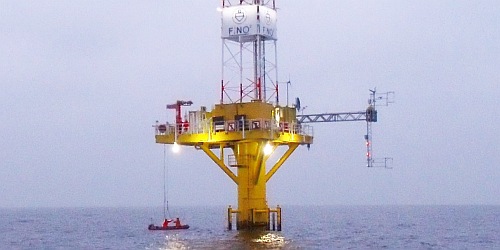 More recently, longterm scatterometer measurements were performed from a research platform in the Baltic Sea. Some information is provided here.
More recently, longterm scatterometer measurements were performed from a research platform in the Baltic Sea. Some information is provided here.
Internal Pages

